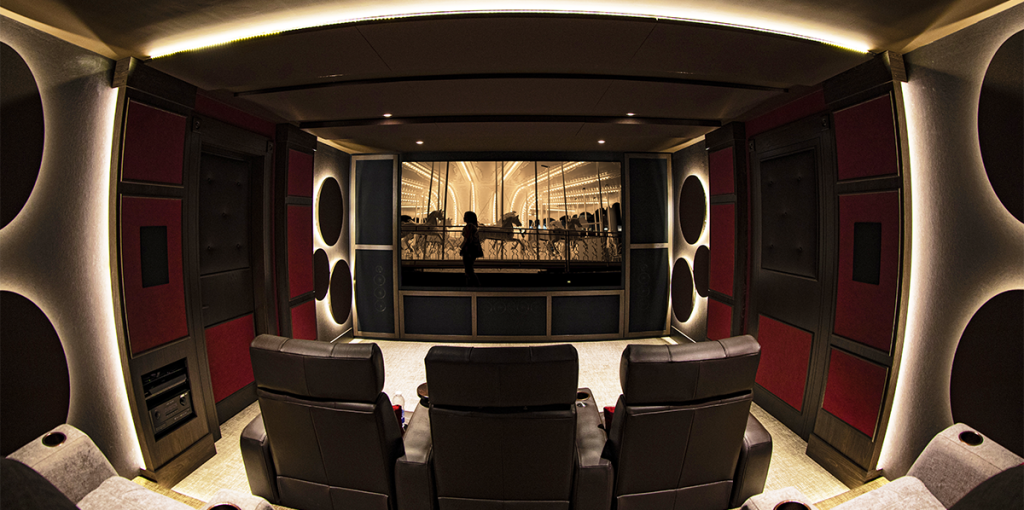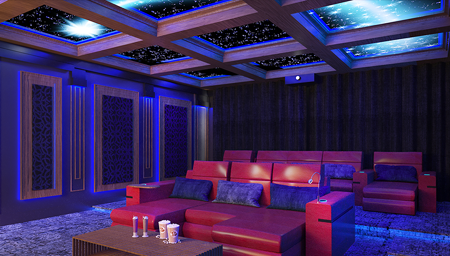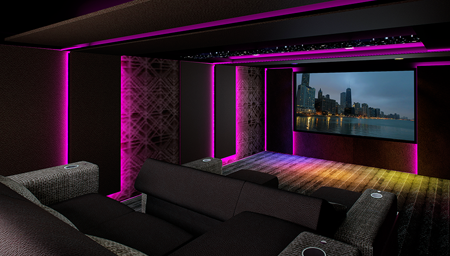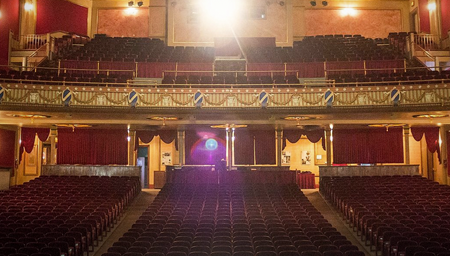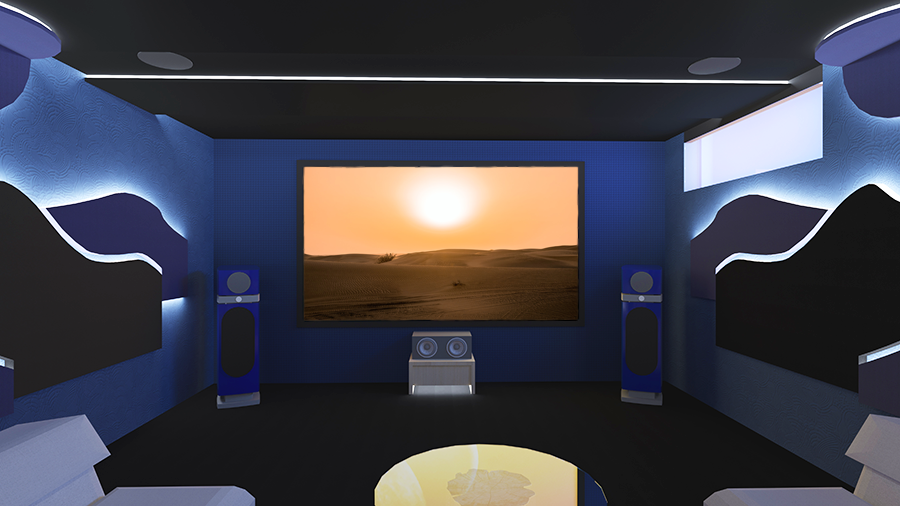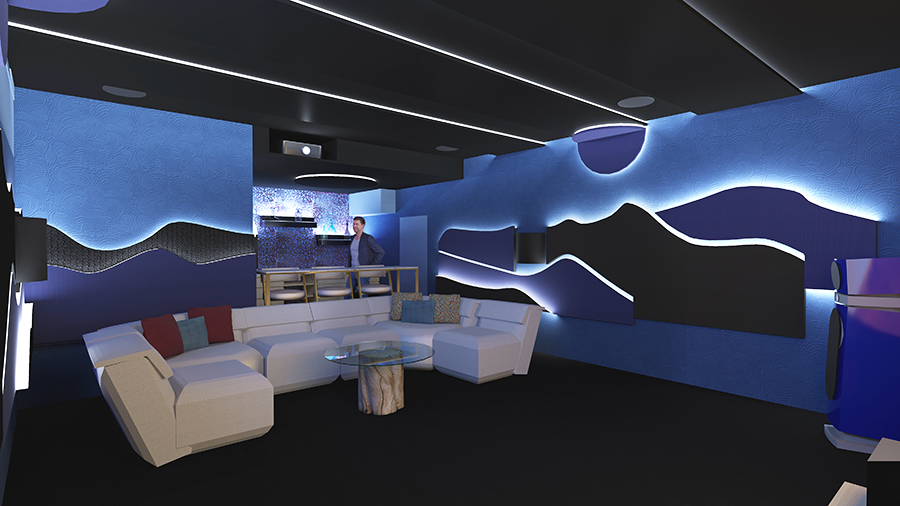Acoustic panels, imaginatively deployed, can be the difference between a great- and terrible-sounding room
by Maria Deschamps
July 26, 2022
About the only people who really get excited about discussing acoustic treatments are acousticians. With clients, treatments are way down at the bottom of the list, below deciding what type of pad to use under the carpet. But treatments make a huge difference in the sound quality of a room—and, while they have a reputation for being unsightly, that really doesn’t matter because they can be inconspicuous when properly designed.
Given that, why oh why are luxury theater designers just installing acoustic panels on top of their drywall? I have seen far too many installs of 24 x 48-inch panels directly on a wall or ceiling, either in a theater or music studio—and they are uggg-ly! As a consequence, a lot of my new clients say to me “Do we have to have acoustic panels?” and my response is “Yes, you do, but we can make them part of the design, either by hiding them completely or by dressing them up so you’ll never know they’re acoustic panels.”
Certainly, hiding the panels by installing them behind a stretch-fabric system is a much better and cleaner alternative. In that case, all of the panels are hidden—no one sees them so you don’t have to worry about what they look like. Because of that, it doesn’t matter what color or texture they are. A stretch fabric is indeed the preferred solution for acousticians since they can install as many panels or baffles as they need and put them wherever they want. The speakers are also hidden behind the fabric, and the nice thing is that the result is a clean, flat surface.
Stretch fabric systems aren’t for everyone, however, and it’s not as easy as you would think to find a fabric that meets all the technical criteria acousticians require, like elasticity, acoustic transparency, breathability, and opacity. Imagine, we must start with these requirements and then make sure the acoustically transparent fabric also meets the design concept and color criteria that satisfy the designer and client.
This Maria-designed home theater uses custom-designed round acoustic panels accented by LED strip lighting
CLICK ON THE IMAGES TO ENLARGE
Sign up for our monthly newsletter to stay up to date on Cineluxe
One thing is for certain: Acoustic panels are a must in a home theater. They reduce reverberation and minimize noise pollution. They play a major roll in increasing sound quality—not to be confused with sound isolation, which is what keeps the sound inside from traveling outside of your theater and vice versa. When designing a theater, we need to specify and design surfaces that reflect and surfaces that absorb sound. Acoustic panels absorb sound. They are made mostly of fiberglass and come in several thicknesses.
What I love about these panels is that they’re easily customizable. Although they still need to be covered with an acoustically transparent fabric, we can use another finish—like a sexy wall covering—next to them. Using different finishes gives us more possibilities to create an interesting concept. We can make them any size or shape and we can place a long run of several panels side by side with an inconspicuous joint. Once the exact locations of the surround speakers are determined, we can design the panels to hide the speakers behind them. We can also layer panels on top of each other to increase the density and functionality as well as create design interest. Finally, we can carve out recesses on the edges of panels to hide LED strip lights—and you know how much I love indirect lighting!
My take is that creativity is paramount in a private theater, so the space should be distinctive and authentic. Technical elements like acoustic panels shouldn’t inhibit design creativity, and by customizing them they can really be part of the “Wow!” factor. So please, no more 24 x 48-inch wall panels—design something magnificent!
Maria Deschamps is a certified Interior Designer, IDC, NCIDQ, APDIQ and has been designing home theaters and media rooms since the year 2000. She also designs high-end residential, restaurant, and commercial spaces, and is a partner at TKG, the Theo Kalomirakis Group.
For this media room, Maria used custom-made acoustic panels with an organic curve along the top with indirect LED strip lighting behind
© 2023 Cineluxe LLC


